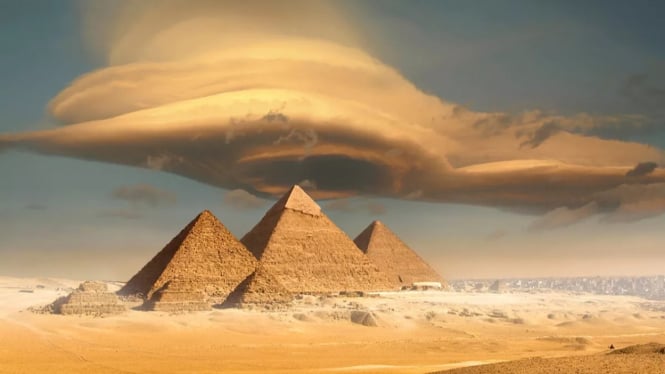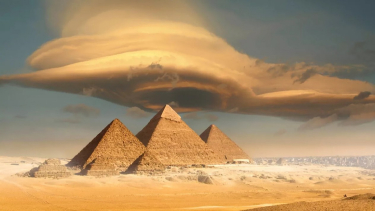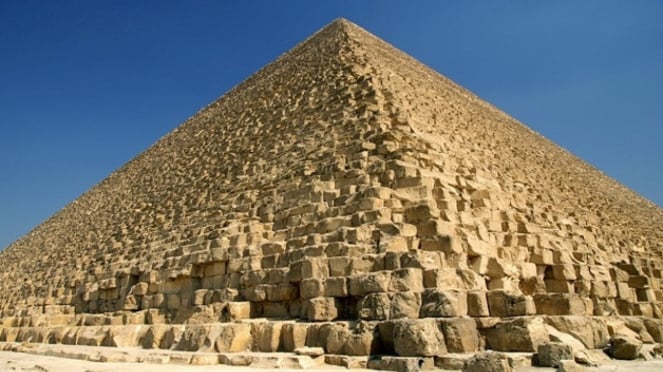A Void Chamber Mystery in the Great Pyramid: 4,500 Years Sealed
- Getty Images
VIVA – Inside the Great Pyramid of Giza, there is a massive void. The room was sealed when the pyramid was completed some 4,500 years ago. The function of this massive void is still a question for archaeologists.
This empty room was discovered by the ScanPyramids team. They shot the Great Pyramid of Giza using the "muon tomography" technique. The technique utilizes muons, which are negative energy particles produced by collisions between cosmic flares and atoms in Earth's outer atmosphere.
“Like X-rays, which can penetrate the body and allow bone imaging, these elementary particles can keep a quasi-linear trajectory while going through hundreds of meters of stone before decaying or being absorbed,” the team explained.
Piramida Agung Giza.
- U-Report
Through this technique, they managed to find a space that had never been detected before, "We report the discovery of a void with a shape similar to the Great Gallery and measuring at least 30 meters above the Great Gallery," wrote the team.
This empty space was named the "great void". As of now, the function of the giant space is unknown.
Cambridge University archaeologist, Kate Spence told National Geographic that the space could have been formed during construction, used as a ramp to put stones in position. Afterward, the space was either left empty or filled with rubble.
Another theory is more fantastic. The great void is thought to be the secret burial place of Khufu, Egypt's second pharaoh who is thought to have financed the construction of the Great Pyramid of Giza.
When the Great Pyramid of Giza was discovered and explored, archaeologists found many rooms, including a chamber containing a sarcophagus that was thought to be the small place where Khufu was mummified. However, the sarcophagus turned out to be empty.
Archaeologists then thought Khufu's mummy had been stolen in the looting of the cathedral. Now, a new theory suggests there is an undiscovered fourth chamber containing Khufu's mummy.
Two French amateur Egyptologists, 2004, used earth-penetrating radar to analyze the cathedral's architecture and concluded that there was an extra chamber yet to be discovered.
According to them, the Great Pyramid of Giza was built without detailed planning. "Khufu had three burial chambers built for himself. The first chamber was unfinished, the second chamber was finished, and the third chamber was cracked. Therefore, Khufu worked in the second room."
The second expert believes that the place where Khufu placed it was in a corridor hidden from the queen's chamber, where all gifts to Khufu were kept.
To prove their theory further, the ScanPyramids team 2022 announced plans to return to Giza using more advanced tools. Once fundraising is complete, it will take them two years to build the device, "We plan to use a telescope system that has 100 times the sensitivity of the previous device. It can compose muon image from all angles, and can create tomographic images of the entire church."





















